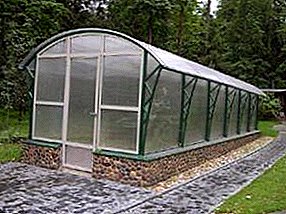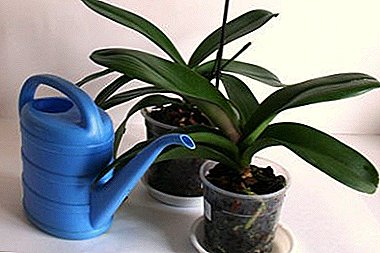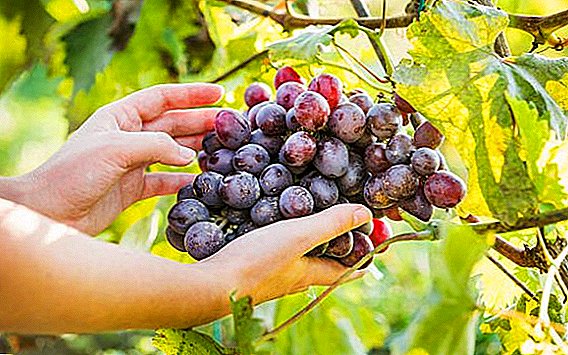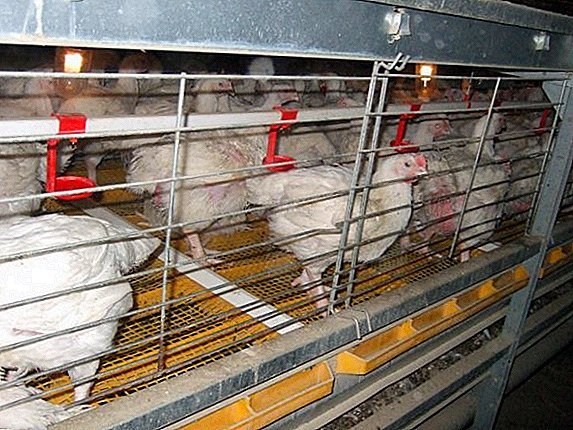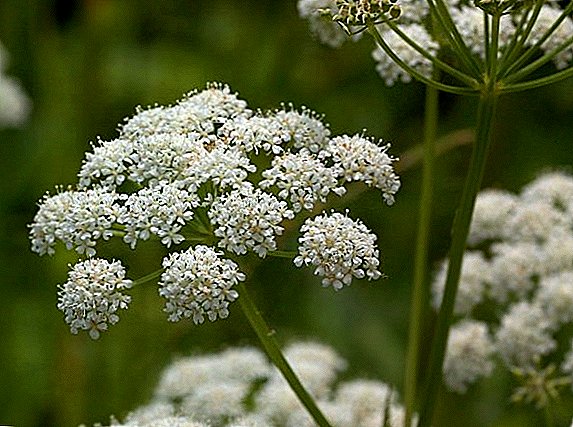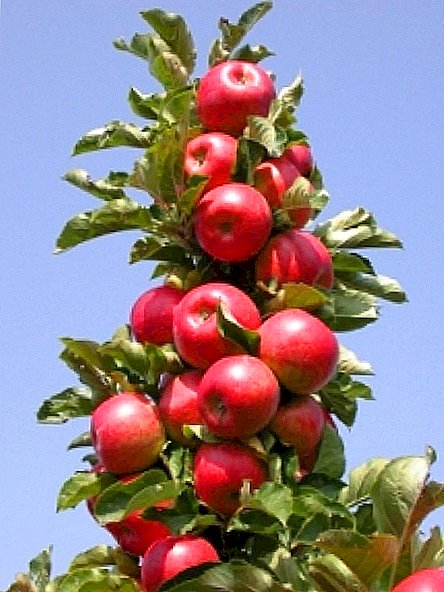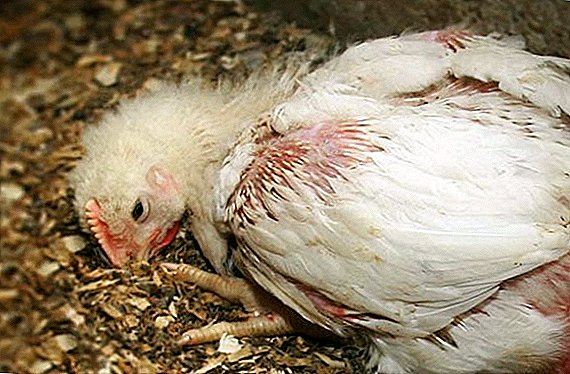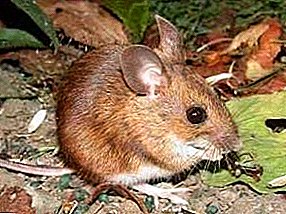
In Russia lives about 100 kinds of different mice. And they all pose a threat to farms, causing great harm to crops, fruit trees and shrubs.
Greatest loss agriculture suffers from three types of mice. These are brownies, field and forest mice.
Let us consider in more detail how forest mice harm farms and describe the measures taken to combat these rodents.
Description and photo
These are medium sized mice. They exceed in size house mouse. Their body length is 7-10 cm, tail about the same length.
Her body weight ranges from 15 to 30 grams. Head, compared with the body is quite large. Muzzle her pointed shape with big eyes.
This type of mouse very long ears, they can reach the eyes, with her body 7-10 cm ears reach 2.2 cm
Color, usually brown, but there are some individuals of yellow color and even red. Young animals have a dull color, with time their color becomes more vivid.
On the chest of individuals there is a bright spot. Such white spots are characteristic especially for individuals living in mountainous areas.
The peak activity of the behavior of forest mice is late evening, night and early morning. They do not fall into hibernation.



 As mentioned above, there are many types of mice. With information about some of them you can find on our website.
As mentioned above, there are many types of mice. With information about some of them you can find on our website.Read all about these of them: the baby-goat, yellow pestle, steppe pestle, voles: underground, dark, flat-skull, narrow-skull, Brazilian, red and red, vole housekeeper, gray vole and earth rat.
Breeding
Forest mice can reproduce as early as 2-2.5 months. If the conditions of their habitat are favorable, then reproduction occurs 3-5 times a year, for one offspring the female is able to bring 5-6 cubs.
Distribution in Russia
On the territory of Russia is widespread, with the exception of the Far North and permafrost areas. Favorite places of residence for this species are open forest areas.
They can build their nests in hollows of trees, in roots or fallen trees. Often inhabited by man-made agrocenoses, that is, gardens and fields, creating a complex system of holes and moves under them.
Usually there are several chambers in these homes for nesting and food storage and 3-4 exits. In winter time can move to warehouses and granaries, in search of additional fodder base and shelter from the cold, especially if the winter has stood out harsh.
What feeds on where it enters the food chain
 This is what the forest mouse in the forest eats. deciduous tree seeds.
This is what the forest mouse in the forest eats. deciduous tree seeds.
In second place is preference berries and small insects, but green foliage is rarely eaten only if very hungry. This usually occurs in spring when there is no fresh greens in abundance, and there are no seeds and berries yet.
Since it is known that this species of mice is active all year round, this makes them convenient prey for predators.
Their the number is regulated by owls, ferrets and weasels. In winter, they can also enjoy foxes.
What does harm and methods of struggle
A forest mouse adapts itself very easily to various biological conditions and can colonize fields with crops.
They do a lot of damage to farms., on large areas destroying winter and spring crops of cultivated and industrial plants, primarily rye, oats and wheat.
They spoil crops at all stages of plant growth: they eat sown grain in the ground, gnaw young sprouts, spoil the stems and leaves of plants.
But most of all destroy ripe grains cultural crops. One wood mouse per day eats up an amount of grain equal to its own weight.
 Breaking holes in the ground, they spoil the root system of plants. In the gardens and nurseries of the mouse gnaw up the trunks, shoots and roots of fruit trees and shrubs, spoil and destroy the ovary, eat ripe berries and fruits.
Breaking holes in the ground, they spoil the root system of plants. In the gardens and nurseries of the mouse gnaw up the trunks, shoots and roots of fruit trees and shrubs, spoil and destroy the ovary, eat ripe berries and fruits.
The problem is also that these rodents for a short period are able to settle and multiply over a vast area of sown land.
Mice build a complex system of burrows with a large number of passages and several stores in which they store grains of oats, wheat, rye and barley for the winter.
IMPORTANT! Forest mice carry dangerous diseases such as hemorrhagic fever and leptospirosis. Fleas carried by mice can be a source of very serious danger to domestic animals.
Methods of dealing with forest mice can be divided into two ways: preventive measures and direct destruction.
Preventive measures include installation of various scarers and construction of barrier barriers.
In small farms it is the unfolding of plants, the smell of which scares rodents: garlic and black root and the installation of mechanical and electronic scarers.
For the destruction of mice in a small area of their burrows are filled with a special deterrent solution.
But in the mass invasion of rodents need to take drastic measures. Destroying the settlement of mice is not an easy task, it is necessary to apply an integrated approach.
 For large farms with huge acreage, it is necessary to apply to special companies and organizations that carry out mass disinfestation.
For large farms with huge acreage, it is necessary to apply to special companies and organizations that carry out mass disinfestation.
The main methods of disinfestation:
- installation of ultrasonic scarers;
- installation of mousetraps with bait;
- glue-based traps;
- spreading poisoned grain;
- Pollination of foci of mass settlement of mice with toxic chemicals.
For the effective destruction of rodents you need to apply all measures to combat mice. And has security measures: measures to destroy mice should not harm the soil and human health.
IMPORTANT! Mice pose a greater threat to the harvest. Making their way to the storage places of the crop, to warehouses with grain and flour, they destroy stocks, eating them and polluting them with waste of their vital activity.
 Not only mice can cause significant damage to gardens and gardens. We offer to your attention a series of materials about wild rats, shrews, bats, moles.
Not only mice can cause significant damage to gardens and gardens. We offer to your attention a series of materials about wild rats, shrews, bats, moles.And also about insect pests: potato moth, bedbugs, Colorado beetles, May beetles, Medvedok, ants, nematodes, spider mites, peppered moths, locusts, slugs, scoop butterfly, aphids, thrips, and cicadas.
Conclusion
Now you have met such a dangerous pest, like a wood mouse, which, despite its small size, can bring huge damage to both nature and farmsby destroying the crop of various crops.
The fight against forest mice should be comprehensive.


